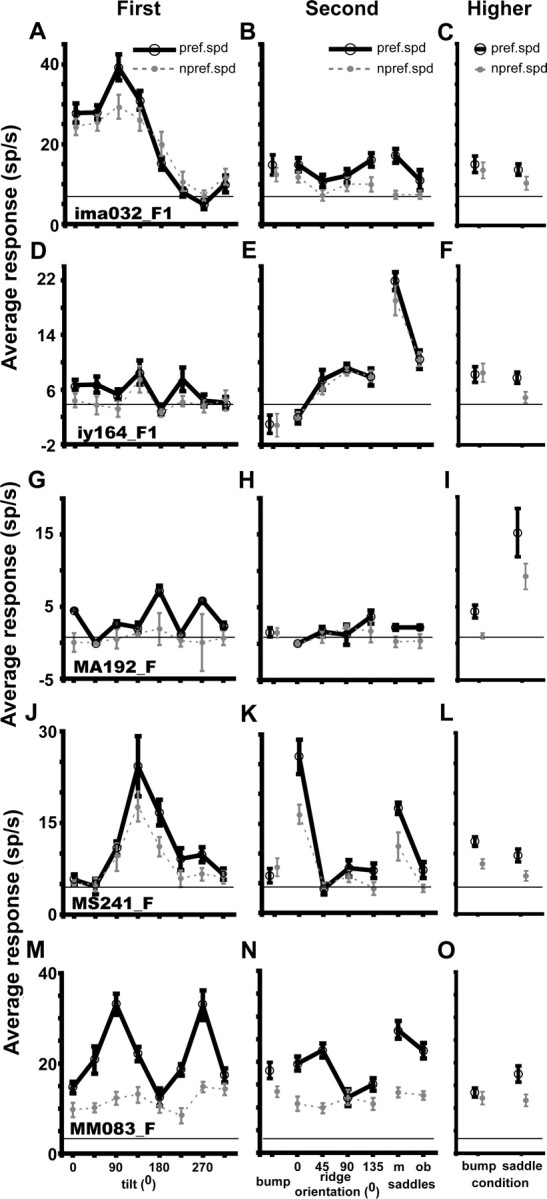Figure 2.

Tuning curves for tilt, second-order and higher-order structure at preferred (black solid lines) and nonpreferred (gray dashed lines) speeds of five FST neurons (A–O); all five neurons preferred the fast mean speed (2.5°/s). A–C, Neuron (Ima032_F1, eccentricity 4.8°, stimulus size 12°) selective for first-order stimuli (d′ first-order = 3.85, first-order separability r2 shape–speed = 0.99; two-way ANOVA, main effect of tilt, p < 10−4; interaction of tilt and speed, NS; other main effects, NS). D–F, Neuron (Iy164_F1, eccentricity 3.6°, stimulus size 4°) selective for the oblique saddle (d′ second-order = 5.48, separability r2 shape–speed = 0.99; two-way ANOVA for main effect of second order, p < 10−6; interactions between speed and second order, NS). G–I, Neuron (MA192_F, eccentricity 4.8°, stimulus size 12°) selective for the higher-order saddle (d′ higher-order = 2.12; two-way ANOVA, main effects of higher order, p < 10−4; interaction between speed and higher order, NS). J–L, Neuron (MS241_F, eccentricity 1.7°, stimulus size 4°) selective for both first-order (first-order d′ = 3.42; separability r2 shape–speed = 0.97) and second-order (second-order d′ = 3.87; separability r2 shape–speed = 0.97) stimuli [two-way ANOVA, main effects of condition, p < 10−7 and interaction of condition and speed was nonsignificant for both first and second order; main effect of condition for higher order was nonsignificant. M–O, Neuron (MM083_F, eccentricity 2.4°, stimulus size 4°) selective for first-order (d′ = 3.3 and separability r2 speed shape = 0.78) and second-order (d′ = 2.7 and separability r2 speed shape = 0.69) stimuli but with speed interaction (two-way ANOVA, main effects of condition, p < 10−6 and p < 10−3 for first and second order, respectively, and interaction between shape and speed, p < 10−3 and p < 0.012 for first and second order).
